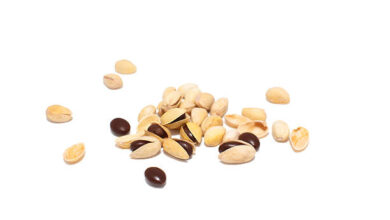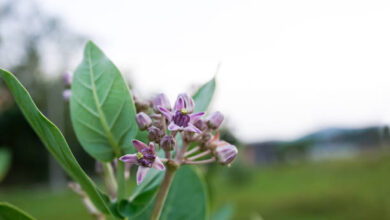How Big is a Mustard SeeD

Have you at any point pondered exactly the way that huge a mustard seed truly is? Regardless of being referenced in different strict texts and being a typical fixing in many dishes, the genuine size of a mustard seed might shock you. In this blog entry, we will dive into the universe of mustard seeds to reveal their actual size, investigate various assortments, and talk about their emblematic importance. We should investigate these little yet powerful seeds.
Uncovering the Genuine Size of a Mustard Seed
Mustard seeds, the humble wonders that begin from the mustard plant, are misleading little in height. These seeds, encapsulating the embodiment of the expression “little yet powerful,” regularly measure a simple 1 to 2 millimeters in width.
This spots them among the smallest seeds used in culinary practices around the world. In spite of their tiny aspects, mustard seeds don’t miss the mark with regards to conveying a strong eruption of flavor and fragrance. This strength is the thing makes them a valued fixing across different worldwide foods, offering a hot, tart kick that can change a dish. The actual seeds are completely round, encapsulating a smooth surface that gives a false representation of their serious taste profile.
Such a little size may be astounding for those new to the genuine size of mustard seeds, particularly taking into account the extensive development potential these seeds harbor, fit for prospering into lavish mustard plants. The unmistakable difference between the seed’s underlying size and the full grown plant’s level further highlights the noteworthy idea of mustard seeds. Their capacity to confer critical flavor, smell, and even medical advantages from such a small bundle keeps on charming mustard seeds to gourmet specialists, home cooks, and food fans all over the planet.
Various Assortments of Mustard Seeds and Their Sizes
While investigating the different universe of mustard seeds, it becomes obvious that there is a range of assortments, each recognized by slight varieties in size, variety, and flavor profile. The most pervasive sorts experienced in culinary circles are the yellow, brown, and dark mustard seeds. Yellow mustard seeds, frequently alluded to as white mustard seeds, are the smallest of the triplet. They are known for their unpretentious flavor, which is less extreme contrasted with their partners, making them a number one for milder toppings and dishes.

- Conversely, earthy colored mustard seeds are a piece bigger and pack a more articulated, fiery punch. These seeds are a staple in numerous Asian and European recipes, where they’re utilized to add profundity and intensity. The biggest among them, dark mustard seeds, are eminent for their strong, blazing flavor. They’re generally utilized in Indian cooking, carrying an interesting zing to a variety of customary dishes.
- Every assortment’s remarkable size and flavor qualities add to its particular culinary purposes and social importance. While yellow mustard seeds may be liked for their mellowness in specific sauces and dressings, the bigger brown and dark seeds are pursued for recipes that request a more grounded, more impactful flavor profile. In spite of these distinctions in size and taste, all mustard seeds share the normal quality of being minuscule yet equipped for granting huge flavor to a wide assortment of dishes, highlighting the flexibility and worldwide allure of these small yet strong seeds.
The Emblematic Meaning of the Mustard Seed’s Size
The minute size of the mustard seed holds significant emblematic worth in many societies and strict customs. It is significant of the power and possible that exists in little starting points. In Christian lessons, the mustard seed is habitually refered to as an illustration for confidence; an honest little proportion, much the same as the size of a mustard seed, is supposed to be sufficient to accomplish the apparently unthinkable. This story, showing that even the littlest confidence can develop into something considerable, is a demonstration of the idea that size doesn’t direct importance or potential.
- Essentially, in Buddhism, the mustard seed is utilized in stories to mean the significance of understanding and defying enduring, representing that even the littlest things can show us significant bits of insight our reality. The imagery reaches out to different spaces too, where the mustard seed addresses development, change, and the acknowledgment of potential despite everything.
This figurative importance enhances the culinary and healthy benefit of the mustard seed, mixing it with more profound significance. - It urges people to see the value in the idle power in humble starting points and little signals, advising us that significance frequently grows from the littlest of seeds. Along these lines, the mustard seed rises above its actual characteristics, turning into an image of trust, confidence, and the vast conceivable outcomes that life offers.
From Little Seed to Powerful Plant: The Development Excursion
The change of the mustard seed into a prospering plant is an interaction loaded up with amazement and development. Subsequent to being planted into the dirt, these little seeds set out on an excursion of improvement that is however noteworthy as it could be emblematic. Inside only a couple of long periods of planting, the mustard seeds start to grow, rapidly rising up out of the ground as delicate seedlings.
- This beginning phase of development is vital, as the plants are defenseless and expect care to guarantee their endurance. As the seedlings develop, they form into more grounded plants with wide, green leaves, making way for the following period of their lifecycle.
In time, the plants arrive at their full level, frequently standing a few feet tall, an unmistakable difference to their unassuming starting points. The presence of energetic yellow blossoms denotes a huge achievement in the mustard plant’s turn of events. - These blossoms are a visual scene as well as a pointer that the plant is prepared to enter the following phase of its life. Following fertilization, the blossoms give approach to units, which house the up and coming age of mustard seeds.
- This pattern of development, from a little seed to a hearty plant fit for creating seeds of its own, features the versatility and potential installed inside every mustard seed. It’s a striking exhibition of how something so little can transcend the earth, coming to towards the sky, and in time, complete the cycle by giving life to new seeds. This excursion highlights the interminable pattern of development and recovery that characterizes the mustard plant’s presence, showing the striking ability of nature to sustain life from the littlest of starting points.
Mustard Seeds in Culinary Purposes: Size Matters
In the domain of culinary expressions, the apparently unimportant size of mustard seeds misrepresents their enormous effect on flavor profiles across different cooking styles. These small seeds are a force to be reckoned with of tart and interesting flavors, proficient at mixing dishes with an undeniable zing. Their dainty height makes them an optimal contender for consistently mixing into sauces, dressings, and marinades, where they confer profundity without ruling the dish’s general taste.
Mustard seeds are especially celebrated in Indian cooking, where they’re much of the time spluttered in hot oil to deliver their dynamic flavors prior to being integrated into dishes. This strategy, known as treating, permits the seeds to grant a rich, fragrant quality to curries and lentil soups. Essentially, in European and Center Eastern foods, mustard seeds are necessary to the formation of mustards and pickles, contributing both surface and an eruption of flavor that supplements meats and cheeses perfectly.
Their application stretches out past conventional purposes; gourmet specialists and home cooks the same investigation with mustard seeds to add a zesty kick to plates of mixed greens, vinaigrettes, and even breads. The capacity of these microscopic seeds to break down or relax during cooking guarantees that their flavor is equitably appropriated all through the dish, improving the general eating experience without overpowering the sense of taste.
Hence, the size of mustard seeds, while little, assumes a vital part in their culinary flexibility. It permits them to mesh a perplexing embroidery of flavors into a heap of dishes, demonstrating that in the realm of cooking, the effect of a fixing isn’t directed by its size.
Collecting and Putting away Mustard Seeds: Keeping the Minuscule Monsters
The method involved with gathering mustard seeds is a cautious undertaking, requiring the assortment of cases brilliantly when they have developed and dried on the plant. This ideal social event is significant to forestall the deficiency of seeds as units open. When gathered, the seeds are isolated from the units, a stage that uncovers the genuine abundance of these little ponders. The quintessence of putting away mustard seeds lies in shielding their sharpness and the flavors that make them a culinary fortune.
To accomplish this, the seeds should be kept in a climate that is cool and without dampness. Impenetrable compartments are great for this reason, offering security against dampness and light, the two of which can corrupt the nature of the seeds over the long run. Position in a storage space or a pantry away from direct daylight guarantees that the seeds stay energetic and prepared to confer their striking flavors to dishes at whatever point they are called upon. This strategy for capacity protects the seeds’ intrinsic characteristics as well as broadens their timeframe of realistic usability, making them an enduring expansion to the culinary tool compartment. By sticking to these practices, the trustworthiness of the mustard seed, regardless of its minor size, is kept up with, prepared to release its strong desire for horde culinary manifestations.





One Comment